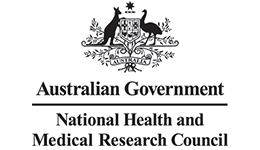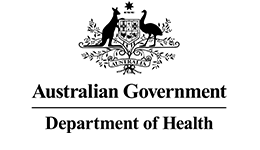Developing the tools to map and measure urban liveability across Australia

Status completed
Start Date
End Date
Liveability measures and rankings can be used by policy makers, planners and researchers to help determine inequities in liveability, both within and between Australian cities.
The project developed a national liveability indicator platform for state and local governments, and policy and planning practitioners, with a view to making areas more liveable.
Introduction
Building upon earlier research, this project developed a national database of indicators for the liveability domains of walkability, transport, public open space, food environment, alcohol environment, housing affordability and employment, with a view to ensuring the measures are disseminated and used in planning urban environments to achieve healthier, more liveable communities.
The work continues to be built upon in the more recent project Benchmarking, monitoring, modelling and valuing the healthy liveable city.
Featured project resources
-
Why liveable cities are important for better health equity
Resource category:Podcasts
Date -
How we can create healthier, liveable cities
Resource category:Videos
Date -
Creating liveable cities in Australia: A scorecard and priority recommendations for Melbourne, Sydney and Western Australia
Resource category:Reports
Date -
Creating healthy liveable neighbourhoods
Resource category:Findings Brief
Date
Featured project news
-
A career that captured the imagination
News Category: Prevention Centre NewsDate -
Taking liveability goals global
News Category: Prevention Centre NewsDate -
Australian cities among the worst performing on walkability and public transport access
News Category: Media coverageDate
About
Measuring and mapping urban liveability across Australia – developing tools for use by policy makers, practitioners and researchers to identify inequities and plan better cities
Project titleHow can health data make cities more liveable?
In 2013, the Prevention Centre funded the National Liveability Study to develop and validate a set of national, urban, policy-relevant, liveability indicators associated with chronic disease and health outcomes.
This was successfully achieved in 2015 with the delivery of a set of indicators (measures) covering five liveability domains: alcohol, food, public open space, transport and walkability, in five different Australian cities.
The final report from the first stage of the study recommended extending the coverage of the indicators to include all Australian capital cities and linking these to national health survey data. This will ensure the measures are disseminated and used in planning urban environments to achieve healthier, more liveable communities. This next stage is underway with the project team developing tools, including a national indicators database and online portal, for users to:
- Access the indicators across each of the liveability domains
- Visualise the indicators within a specific area, such as where people live
- Compare the liveability of an area for each of the liveability domains.
How did the project address the issue of improving inequities in liveability?
The project team developed a national Australian database of indicators for the liveability domains of walkability, transport, public open space, food environment, alcohol environment, housing affordability and employment.
The project team consulted with external stakeholders, making the national database available to them through an online portal. Stakeholders were able to upload individual addresses into the portal and download the matching liveability indicators for each address. Continual user feedback on the portal helped the project team plan the future direction of this key tool for analysing and visualising indicators spatially, before the tool is made available for wider use.
The team also linked national population health data to the liveability indicators in the database, allowing new insights into the relationship between liveability measures and health outcomes, such as between walkability levels and body mass index. National health data was drawn from the national AusDiab and Ten to Men surveys, with data also linked to the 45 And Up Study.
What are the outcomes?
- Liveability indicators produced across multiple domains at a national level
- Further evidence that shows why health outcomes might vary in different locations
- Tools to ensure the current indicators are used and useful, including a national database and online portal.
The project led to a further Prevention Centre project, Benchmarking, monitoring, modelling and valuing the healthy liveable city.
Relevance for practice
The national liveability indicator platform will be made available for use by our stakeholders, such as state and local government, and policy and planning practitioners. It will help policy makers, planners and researchers to make comparisons both within cities and between cities, which will help determine inequities in liveability. Findings will be communicated to stakeholders through policy briefs, and through state, regional (e.g. Regional Management Forums) and national (e.g. State of Australian Cities, Planning Institute of Australia) planning and policy meetings, conferences and workshops.
News and media
-
A career that captured the imagination
News Category: Prevention Centre NewsDate -
Taking liveability goals global
News Category: Prevention Centre NewsDate -
Australian cities among the worst performing on walkability and public transport access
News Category: Media coverageDate -
Lancet Global Health Series on urban design, transport, and health
News Category: Prevention Centre NewsDate -
A passion project to make the heart sing: Urban planning for healthier lives
News Category: Media coverageDate -
Liveable cities research has real impact on health and equity
News Category: Prevention Centre NewsDate -
Online tool maps liveability across Australia’s cities
News Category: Prevention Centre NewsDate -
New online tool to compare liveability of individual addresses
News Category: Prevention Centre NewsDate
Other news and media
2018
- The Age, 7 March 2018: The west has Melbourne’s worst commutes – four hours a day across town
- The Sydney Morning Herald, 24 July 2018: Sydney on top for liveability, but falling behind on public transport
- Radio interviews, ABC 774 and 3AW, 11 September 2018: Melbourne Scorecard
- Herald Sun, 11 September 2018: Big homes in outer suburbs affect Melbourne’s liveability: report
- RMIT News, 11 September 2018: How liveable is Melbourne really: New report settles the score
Resources
-
Why liveable cities are important for better health equity
Resource category:Podcasts
Date -
How we can create healthier, liveable cities
Resource category:Videos
Date -
Creating liveable cities in Australia: A scorecard and priority recommendations for Melbourne, Sydney and Western Australia
Resource category:Reports
Date -
Creating healthy liveable neighbourhoods
Resource category:Findings Brief
Date -
The Australian National Liveability Study final report
Resource category:Reports
Date -
How city design affects our health
Resource category:Videos
Date
Publications
Other publications
Presentations
2018
Arundel, J, Lowe M, Hooper P, Roberts R, Rozek J, Higgs C and Giles-Corti B. Are Australian cities delivering liveability? A presentation to the Surveying and Spatial Sciences Institute/Institute of Surveyors Victoria on the Creating Liveable Cities in Australia report. Melbourne, 2018
People
Lead investigators
Project team
-
Dr Thomas Astell-Burt Dr Thomas Astell-Burt has finished working with the Prevention Centre.
University of Wollongong -
Dr Hannah Badland Dr Hannah Badland has finished working with the Prevention Centre.
RMIT University -
Associate Professor Sarah Thackway
NSW Health -
Dr Jonathan Arundel Dr Jonathan Arundel has finished working with the Prevention Centre.
RMIT University -
Professor Sally Redman
The Sax Institute -
Dr Claire Boulange Dr Claire Boulange has finished working with the Prevention Centre.
RMIT University -
Distinguished Professor Billie Giles-Corti
RMIT University



















